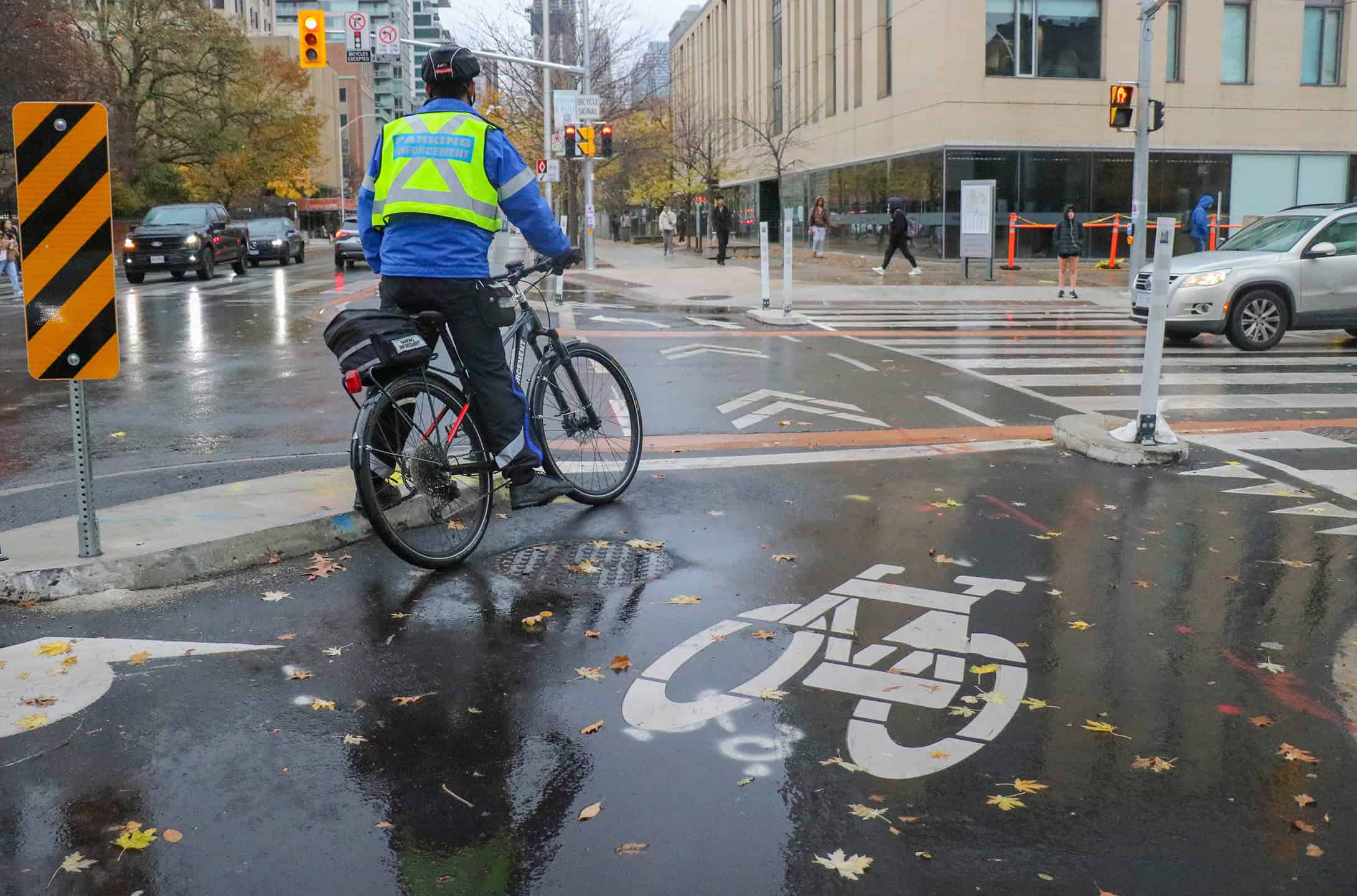Those who regularly bike around U of T were in for a shock when Ontario Premier Doug Ford announced his plan to remove three of the largest bicycle lanes within Toronto. Under the provincial government’s proposed Bill 212 — Reducing Gridlock, Saving You Time Act, the bike lanes running along Yonge Street, University Avenue, and Bloor Street — which were completed this year — are all slated to be removed.
The three lanes cost $27 million to install and will reportedly cost an additional $48 million to remove. If the legislation is passed, the provincial government would be given the authority to examine other bike lanes for possible elimination if they have replaced a regular lane of traffic.
When two worlds collide
Toronto’s City Hall has responded to Ford’s plans with fierce resistance.
“This is complete overreach by the provincial government. We’re talking about provincial interference in a matter that they have no right to do,” said Toronto City Councillor Dianne Saxe in an interview with The Varsity. Saxe represents Ward 11 University-Rosedale, which covers the UTSG campus.
“The bike lanes are a necessary and essential part of keeping the cost of living down, improving mobility, increasing safety, climate action, air quality — all things which are high priority for the people of the city of Toronto,” she explained.
Toronto councillors have been expanding access for cyclists, with the City’s recent plan to install 140 kilometres of bicycle lanes on various streets and new bike racks being installed constantly. If passed, Bill 212 would require municipalities to seek provincial approval to allow new bike lanes that would remove an existing traffic lane.
U of T weighs in
Opponents of the bike lanes claim that the infrastructure causes congestion in the downtown area, needlessly reduces space that could be better used for cars, and endangers cyclists. Ford claimed that the bike lanes were “bringing traffic in our cities to a standstill” and that his cabinet was returning “sanity to bike lane decisions.”
According to an Abacus Data poll, 55 per cent of respondents living in Ontario approve of the premier’s proposal to force municipalities to get provincial approval for bike lanes that would interfere with vehicular traffic.
However, U of T community members have raised concerns over the provincial government’s plans.
Twoey Gray works as the outreach coordinator for Bikechain, a free shop to service and borrow bikes at UTSG and the surrounding area. “Everyone coming into our shop lately asks about the legislation. Nobody’s happy about it. Everyone is equally confused [about] why drivers would want that,” she said in an interview with The Varsity.
Gray continued, “I think I’ve definitely heard from cyclists coming into the shop that they feel more confident biking in the city with bike lanes in new places. People are hungry for more bike lanes. They would really appreciate that the bike lanes that exist continue to exist.”
Yassin Mostafa is a fourth-year student studying mathematics, computer science, and physics and a regular cyclist. In an interview with The Varsity, Mostafa mentioned how he felt far safer with the added protection bike lanes offered.
“I feel unsafe sometimes just being a [cyclist] next to a truck or a car,” Mostafa said. Discussing the various issues of getting around the city, he said, “I know legally a biker is supposed to be allowed on the roads, but legality is different than reality.”
Research from a 2021 Travel Behaviour and Society journal study on perceptions of safety showed that bike lanes can foster a more environmentally friendly city and cause people to adopt a healthy lifestyle. Additionally, the added protections from dedicated bike lanes serve to guard pedestrians, cars, and cyclists from one another, which can prevent collision rates. Since 2006, there have been on average 47 cyclist and automobile collisions every year across the GTA.
Erol Boran — a professor of German literature, language and theatre at U of T — made clear his opposition to the proposed bike lane removals.
“It took so long to get where we are now, and we’re not even halfway there yet,” he said, referring to the lengthy construction period required for installing bike lanes. “[T]hat was a very annoying, difficult, and dangerous time.”
“I do drive a car, but I also drive a bike, and so I can kind of identify with both sides,” Boran explained. “I do see that traffic is a huge problem here, but I think there are much better ways of solving this problem than going in this direction.”



No comments to display.